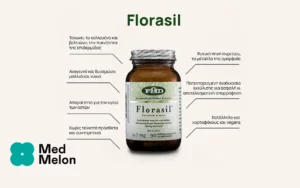
Scientific Names of Blueberries:
Vaccinium corymbosum L., and other blueberry species including Vaccinium alaskensis, Vaccinium membranaceum and Vaccinium ovalifolium [Fam. Ericaceae]
Forms:
Blueberry freeze-dried powder; blueberries infusions
Traditional Usage:
– Antibacterial
– Anti-inflammatory
– Antioxidant
– Astringent
– Biliary Disorders
– Blood Platelet Stickiness
– Blood Purification
– Breathing Disorders
– Cellular Regeneration
– Circulatory Disorders
– Cleansing
– Colic
– Coughs
– Detoxification
– Diarrhea
– Dyspepsia
– Enteritis
– Eyesight Disorders
– Microangiopathy
– Scurvy
– Skin Problems
– Sore Throat
– Urinary Tract Problems
– Urinary Gravel
– Vascular Disorders
– X-ray Preparation
Overview:
Cultivated blueberries, Vaccinium corymbosum L [Fam. Ericaceae], are rich in powerful antioxidants called anthocyanins (ca. 0.25% of dried berries), though the levels of these colorful flavonoids are much lower than those found in European blueberries, Vaccinium myrtillus L., otherwise known as bilberries (ca. 0.7% of dried berries). Certain local wild blueberry species, however, have even higher levels of anthocyanins than bilberries. Preliminary research supported by Flora on blueberry species found in coastal forests of British Columbia, has determined that Alaskan blueberry (Vaccinium alaskensis) dried berries contain as much as 3.4% anthocyanins; mountain bilberries (Vaccinium membranaceum) contain 2.8%; and oval-leaved blueberries (Vaccinium ovalifolium) contain 2.2%. Because of their powerful antibiotic activity against bacteria, including E. coli, blueberries can be used to combat diarrhea. Blueberry soup made with a third of an ounce of berries provides a therapeutic dose. European herbal authorities also list blueberries for treating enteritis, dyspepsia, eyesight disorders, urinary gravel, biliary disorders, scurvy, coughs, lung tuberculosis, preventing post-operative bleeding and improving X-ray details, and for soothing sore throats. Blueberries actually prevent bacteria from adhering to urinary tract walls just as well as cranberries. Anthocyanins also protect skin from sun damage and abnormal growths, prevent LDL cholesterol oxidation better than vitamin C and prevent blood platelet stickiness better than aspirin. Studies to determine the antioxidant properties of blueberries using red blood cell resistance to reactive oxygen species found that anthocyanins significantly enhanced red blood cell resistance to oxidation. Protection was seen following oral supplementation of blueberry polyphenols to rats at 100 mg/ml. Only anthocyanins were found to afford significant protection, this at 6 and 24 hours post supplementation. However, this protection was not consistent with the measured plasma levels of anthocyanins. Plasma polyphenolic concentrations were highest after 1 hour, declining considerably after 6 hours and not detected after 24 hours.
Active Ingredients:
Commercial blueberries contain: Approximately 0.25% anthocyanins and several dimeric proanthocyanidins that decrease in concentration as the berries ripen. The berries also contain: Approximately 30% invert sugar; up to 10% tannins, mostly catechol tannins and other polyphenols including several flavonols such as astragalin, hyperoside, quercitrin and isoquercitrin; over 1% fruit acids; several phenolic acids such as caffeic and chlorogenic acids; and pectins.
Suggested Amount:
For dietary support of eyesight and vascular problems: Take between 62.5 – 250mgs of anthocyanins daily which corresponds to 25 – 100 grams of dried commercial blueberries with 0.25% anthocyanins daily (for every gram of blueberries (1000mgs) there are 2.5mg of anthocyanins). Alternatively, standardized bilberry extract products containing 250mg/capsule of 25% anthocyanins can be taken at the dosage of one to four capsules daily to achieve the same therapeutic anthocyanin requirements. For soothing irritated mucous membranes of the mouth and throat or for treating diarrhea: Unless otherwise prescribed, 20-60 grams or 2-6 tablespoonfuls of blueberry fruit are boiled in water (ca. 150ml) for 10 minutes and passed through a tea strainer while still hot. To treat diarrhea in children or adults, a cup of the freshly prepared tea is drunk cold several times a day. Alternatively, place the berries in cold water for two hours, allowing them to swell and then take one to several teaspoonfuls of these berries with some fluid for the same purpose. Blueberry ‘soup’ is still popular in Sweden today for treating diarrhea.
Drug Interactions:
None known
Contraindications:
None known
Side Effects:
None known
References:
Bomser J, Madhavi DL., Singletary K., Smith MA. 1996: In vitro anticancer activity of fruit extracts from Vaccinium species. Planta Medica 62(3):
212-216.
Cohen-Boulakia F, Valensi PE, Boulahdour H, Lestrade R, Dufour-Lamartinie JF, Hort-Legrand C, Behar A. 2000. In vivo sequential study of skeletal muscle capillary permeability in diabetic rats: effect of anthocyanosides. Metabolism. 2000 Jul; 49(7): 880-5.
Ichiyanagi T, Oikawa K, Tateyama C, Konishi T. 2001. Acid mediated hydrolysis of blueberry anthocyanins. Chem Pharm Bull (Tokyo). 2001 Jan; 49(1): 114-7.
Mian, E., Curri, SB, Lietti, A, Bombardelli, E. 1977. Anthocyanosides and the walls of microvessels: further aspects of the mechanism of action of their protective effect in syndromes due to abnormal capillary fragility. J. Minerva Med 68(52): 3565-3581.
Papanikolaou N, Karantanas A, Maris T, Gourtsoyiannis N. 2000. MR Chol-angio-pancreatography before and after oral blueberry juice administration. J Comput Assist Tomogr. 2000 Mar-Apr; 24(2): 229-34.
Youdim KA, Shukitt-Hale B, MacKinnon S, Kalt W, Joseph JA. 2000. Polyphenolics enhance red blood cell resistance to oxidative stress: in vitro and in vivo. Biochim Biophys Acta. 2000 Sep 1; 1523(1): 117-22.




